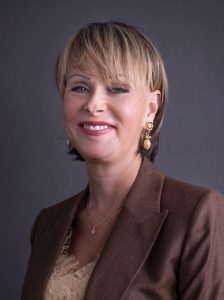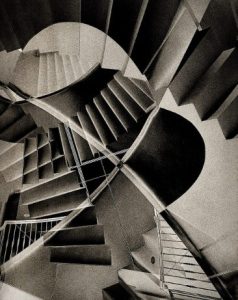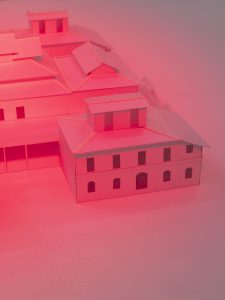Please scroll down for English
“מחשב מסלול מחדש” היא מבוך של משמעויות בתואם מושלם לעולם שמשתנה במהירות.
התערוכה מציינת עשור לפתיחה מחדש של מוזיאון פתח-תקווה והיא חלק Mediations (“ערוצי תקשורת”),ביאנאלה בינלאומית שמרכזה בפוזנן, פולין הנערכת במקביל בארבע עשרה ערים (בהן הירושימה, ניו-יורק ומפוטו שבמוזמביק). כותרתה “פוסט-גלובליזם כששום-מקום נעשה כאן” פורסמה לפני שהוקמה מדינה איסלאמית ודאעש הפך לארגון ששמו מוכר היטב, ולפני “צוק איתן”,התרחשויות שגרמו לטלטלה במחשבה על היחס בין גלובלי למקומי והכרה שמשהו נסדק בהבטחה העצומה שהייתה גלומה ברב-תרבותיות. ביטול השתתפות של כמה אמנים בינלאומיים בתערוכה הזו מסמן חלק מהאבסורדים שנוצרים בתוך עולם האמנות שראה עצמו כחלוץ ומחולל שינוי תרבותי-גלובלי.
“מחשב מסלול מחדש” שם התערוכה הישראלית בביאנאלה מהדהד אפליקציות ניווט המשמשת אותנו והיא תאור של הרגע.
האוצרת דרורית גור –אריה מתבוננת במשוואה מקומיות/גלובליזציה מנקודת המוצא של המסע כמכונן המודעות לכך שהמוכר אינו האופציה היחידה לקיום. המסעות שהיא מציגה הם גיאוגרפיים, תודעתיים ובין זמנים. כמו במרבית התערוכות מאז הפתיחה מחדש המוזיאון מתפקד כתא משמעות בו מתרחשת אוסמוזה – המוזיאון מתמצת ומנכיח שאלות, מבקש לא את אישור הצופים אלא מאתגר בסוג של מבוכה.
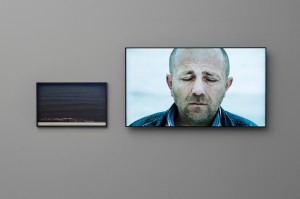
לראות את הים: האיש העמוק של סופי קאל ( 2011) ו Could Be Me של טלי נבון (2014) מוצגות בחלל הכניסה למוזיאון ומסמנות רבים מקווי האמביוולנטיות שחוזרים בעבודות שונות.
העבודה של קאל חריגה בגוף העבודות המצוין שיצרה לאורך השנים והתאפיין באריגה של פנטזיה ומציאות כשחייה משמשים ציר מרכזי. כך היה בשיתוף פעולה שיזמה ב 1992 עם הסופר פול אוסטר כאשר ביקשה ממנו ליצר דמות פיקטיבית (מריה ב”לוויתן”) שהיא תנסה לדמות לה, או Take Care of Yourself מ 2007 ובה ביקשה כמאה נשים לפרש דואר אלקטרוני בו הודיע לה בן זוגה שהוא נפרד ממנה.
לראות את הים: האיש העמוק נוצרה בעקבות שהות של קאל באיסטנבול בה התוודעה לכך שבעיר חיים מהגרים עניים שאינם יכולים להרשות לעצמם נסיעה לחוף הים הסמוך כל כך. קאל בחרה עניים משכונת קדיקיי (Kadiköy) המכוּנה “עיר העיוורים” (מייסדיה היוונים העדיפו אותה על אזורים המשקיפים למצרי הבוספורוס ול”קרן הזהב”). המשתתפים הוסעו לים וצעדו לקראתו כשעיניהם מכוסות. לאחר שהביטו בים צילמה אותם קאל. העבודה בה נראה אחד המשתתפים מעוררת אי נוחות. לראות את הים: האיש העמוק מתקשרת לפרויקט “העיוורים” שקאל יצרה ב 1986 ובה ראיינה עיוורים לגבי מושג היופי והנכיחה אותו בצילומים. הפעם, לדיון באופי ועוצמת המבט נלוות תחושה של התנשאות, דומה לזו של תורמים המצלמים את הנתרמים המאושרים שלהם.
המבט בעיניו הכחולות של הגבר שנראה כמי שזקן בטרם עת מרוגש ממפגש ראשוני מהים. פוקדי מוזיאונים, בדרך כלל מי ששפר עליהם גורלם, שכחו רגע זה. יותר מיצירת אמפטיה כלפי מי שלא זכו לראות ים (וודאי עוד שורת דברים בסיסים והנאות פשוטות) יש מבט על אקסמפלר שאמנית ממרכז דשן יכלה לתת לו חוויה תמורת פלישה לרגע פרטי.
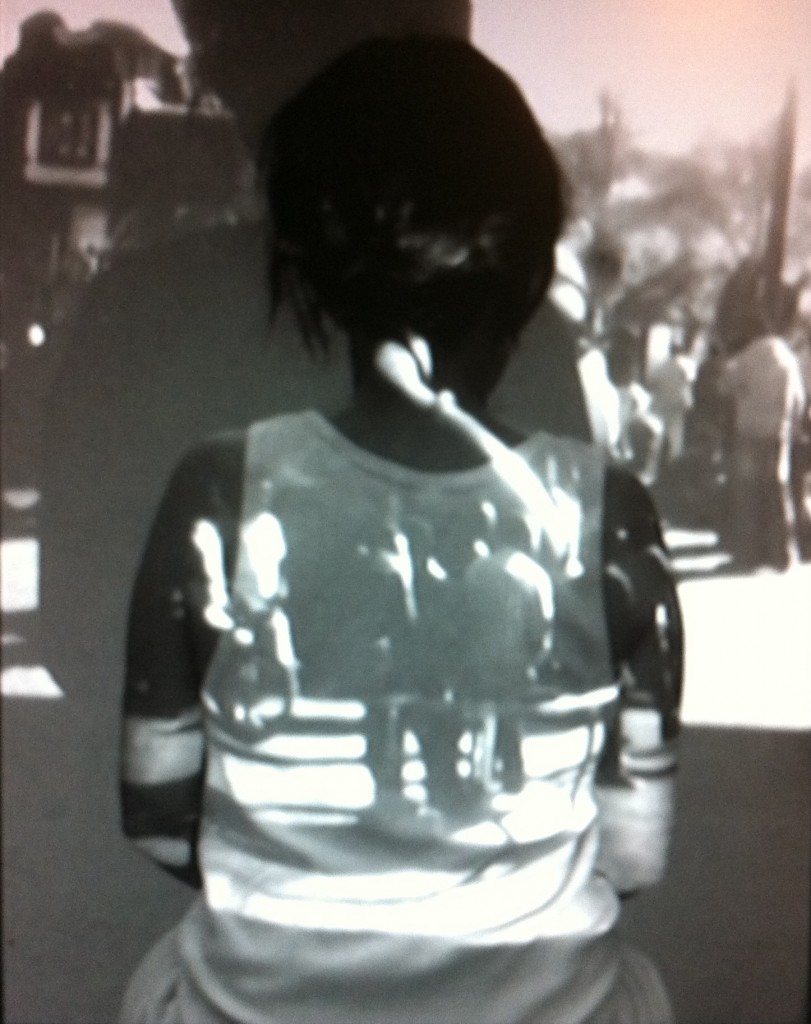
נבון מתבוננת בספריות המשרתות את קהילת העובדים הזרים בתל-אביב בבית הספר ביאליק-רוגוזין ובגינת לוינסקי. היא נוגעת בפצע המבעבע בדרום תל-אביב, שדומים לו יש היום ברחבי אירופה. באזור שהוא מהמוחלשים בארץ חיה אוכלוסיה זרה שהטיפול השערורייתי בה מגביר את קיפוח האוכלוסייה הוותיקה ואינו עושה חסד עם הזרים. הספריות הן אקס –טריטוריות, כניסה לעולם של דמיון או לפחות ריחוק מהמציאות. נבון בונה דימוים שנעים בין התיעודי לאבסטרקטי בלי להפוך את המתועדים לאקזוטיקה. פס הקול מורכב מרחשי רחוב וקטעי קריאה, בעברית ובטיגרינאית (שפה מדוברת באתיופיה ואריתריאה).ההתבוננות על אי של תרבות, אתר למסע סובלימטיבי הופך את העבודה להרהור על כוחה אמנות.
אמיר יציב, מזוהה בדרך כלל בעיקר עם וידיאו מציג את We are attempting to survive our time so we may live into yours המתייחסת לתקליט זהב שנשלח לחלל ב 1977 ובו מסר מהאנושות. המכונה הגדולה, המסורבלת שבנה נראית כאילו נלקחה מספרי זול ורן, מדע בדיוני שהתיישן והפך למגוחך או לחילופין מכמיר לב. הניסיון לסכם את הניסיון האנושי נראה כהיבריס וההתנאות בטכנולוגיה חדשנית נידונה לכישלון בידי הזמן.
Orb, של גיא גולדשטיין, לוקאס ויקרס, ואריאל עפרון מגרסה, 2014 של אייל אסולין שתיהן עשויות בטכנולוגיות מתקדמות של יצור, במקרה של Orb בתכנות אך מתייחסות למכונות מהעבר – גלגל שינים וצפלין, ספינות אוויר ששימשו כבר לפני מלחמת העולם הראשונה לטיסות אזרחיות וצבאיות.
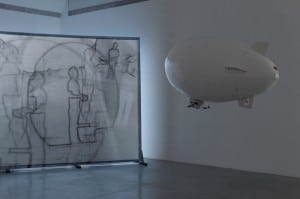
Orb (גרם שמים) מרשימה אף שזוהרה מועם לאחר זמן. היא עשויה עם צפלין המרחף בחלל ומצלמה בתוכו מצלמת את הצופים. הנתונים מתורגמים לרישום המוקרן על מסך דו-כיווני בכניסה לחלל בהשהיה. פנסים ומצלמות מהרצפה עוקבים אחר הצפלין, וכל התיעוד מועבר כרישום למדפסות המדפיסות על לולאת נייר שמסתובבת ביניהן כך במהלך התערוכה יצרו שכבות רישום עד שהנייר ישחיר – עודף המידע משתק.
קונצפטואלית העבודה היא במסורת עבודות מפתח בוידיאו כמו«Time Delay Room» של דן גראהם מ 1974 או “קובייה מעגל סגור” של פיליפ אנגלהארדט הגרמני מ 2012 העוסקות בשאלות של התיעוד
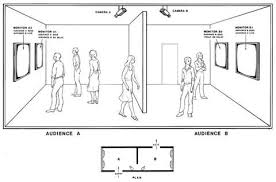
המתמיד של חיינו ואובדן הפרטיות כחלק ממחיר תהליכים גלובליים (האסוציאציה לפרשת סנודון מתבקשת) . הצופים הופכים למשתתפים במאין “האח הגדול” אלא שכאן התיעוד סופו של דבר יקרוס לתוך עצמו.
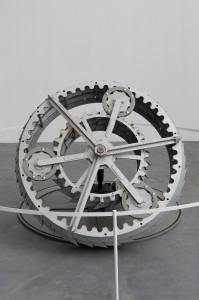
מגרסה,הגלגל הגדול של אסולין נע על צירו, נעצר בהפסקות שנדמות שרירותיות ועם כל כוחו הרב נותר עקר. העבודה מצטרפת למסורת שמדושאן למונה חאטום, נעה מהאבסורדי למאיים.
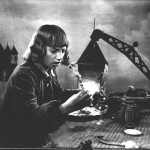
עוד בולטות יריד התענוגות הארציים של ליאב מזרחי שבנה קוליסות כשל קרקס בהן מוזמן הצופה להכניס את ראשו ולהפוך למשתתף.הסצנות שיצר מורכבות ולעיתים מחרידות כמו אונית פליטים במצוקה. גוליבר החדש, סרט מ 1935 של אלכסנדר פטושקו הרוסי היא העבודה התמימה היחידה בתערוכה המפוכחת. סיפורו הוא על נער מתנועת נוער קומוניסטית החולם שהוא גוליבר פועל נגד הבורגנות בממלכה אגדית.
מלחמות האתמול אבודות וגוליבר לא הושיע. לחשב מסלול מחדש .
אוצרת: דרורית גור אריה
ב’, ד’, ו’, שבת 14:00-10:00| ג’, ה’ 20:00-16:00
קריית המוזיאונים, בית יד לבנים רחוב ארלוזורוב 30 פתח–תקוה
הרשמה לניוזלטר הפירסומי השבועי של “החלון” בנושאי אמנות, אירועים ותערוכות חדשות – www.smadarsheffi.com/?p=925 (הרישום נפרד מהרישום לבלוג )
הערות/הארות אנא כיתבו ל thewindowartsite@gmail.com
Recalculating Route
Recalculating Route is a labyrinth of meanings, appropriate for a rapidly changing world. The exhibition celebrates a decade of the reopened Petach Tikva Museum of Art, and is part of Mediations, an international biennale with Poznan, Poland, at its center, held simultaneously in 14 cities (including Hiroshima, New York, and Maputo, Mozambique). The title of the Biennale, Post-Globalism When Nowhere Becomes Here, was publicized before ISIS made the news, before the war in Gaza, events that shook up prevalent thinking on the relationship between the global and local, showing the cracks in the tremendous promise of multiculturalism. Cancellation of participation by a few international artists is only one of the absurdities in the art world, which considers itself to be change agent of global culture.
The Israeli contribution to the 4th Mediation Biennale, Recalculating Route, echoes in its title the way GPS applications dictate and serve us, describing the moment. The curator, Drorit Gur-Arie, observes the local/globalization of journeys as points of origin for establishing awareness that the familiar is not the only option. She presents journeys of geography, consciousness and Time. As in most of the exhibitions since the Museum re-opened, it functions as a cell of meaning in which osmosis is taking place: the Museum as the center distils and makes present questions that do not seek viewers’ affirmation but rather create a kind of confusion.

Sophie Calle’s See the Sea: The Deep Man (2011) and Tali Navon’s Could Be Me (2014) are exhibited in the entrance hall. and to some extent mark the ambivalences appearing in various works in the exhibition. Calle’s work is an exception to her excellent oeuvre over the years, characterized by weaving fantasy and reality based on her life, such as was evident in her collaboration with writer Paul Auster which she initiated in 1992. Calle asked Auster to “invent a fictive character which I would attempt to resemble” (Maria in Leviathan), or Take Care of Yourself (2007) in which she asked over 100 women to interpret an e-mail her partner sent her informing that he was breaking up with her.
See the Sea: The Deep Man was created after a residence in Istanbul. Calle chose some people from the Kadiköy neighborhood who, lacking the means, had never traveled to the sea, although it was part of the city in which they live. Participants were bused to the shore and walked towards the sea, blindfolded. After they looked at the sea, Calle filmed them. This project links to her 1986 series, The Blind, in which she interviewed blind people about the concept of beauty and made it present in her photography. This time, the discussion of character and intensity of gaze are accompanied by a feeling of superiority, similar to philanthropists filming the happy recipients of their donations, which made me uncomfortable.The blue-eyed, prematurely old man is obviously moved by his first encounter with the sea, which most museumgoers, usually belonging to the more fortunate socioeconomic strata, have already forgotten the first time they saw it. I doubt the work arouses viewers’ empathy as much as it embodies the gaze of an artist from a well-off center that can provide an experience in exchange for intrusion into a private moment.
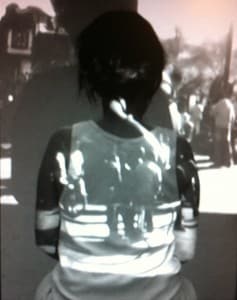
Tali Navon observes at the libraries serving the foreign worker community of Tel Aviv located in the Bialik-Rogozin School and the Levinsky Park. She touches upon South Tel Aviv’s open sore, similar to locations all over Europe. The shameful handling of the foreigners living in the weakest neighborhood of Tel Aviv intensifies the disadvantaged state of the veteran local population and does not benefit them. The libraries are ex-territorial, a portal into a world of imagination far from reality. Navon’s images move between the documentary and the abstract without making those she documents exotic. The soundtrack is composed of street sounds and readings in Hebrew and Tigre (spoken in Eritrea and Ethiopia). Her gaze at an island of culture and the search for sublimation, stimulates thinking about the power of art.Amir Yatziv, usually identified with video works, is showing an installation, We are attempting to survive our time so we may live into yours, referring to the gold record sent into space in 1977 on the Voyager, bearing a message from humankind. The large and bulky record player he built seems to be from an old Jules Verne science fiction book, which now seems comical or pitiful. The attempt to sum up human experience seems to be hubris, while Time will eventually put an end to the enjoyment of the latest technology.
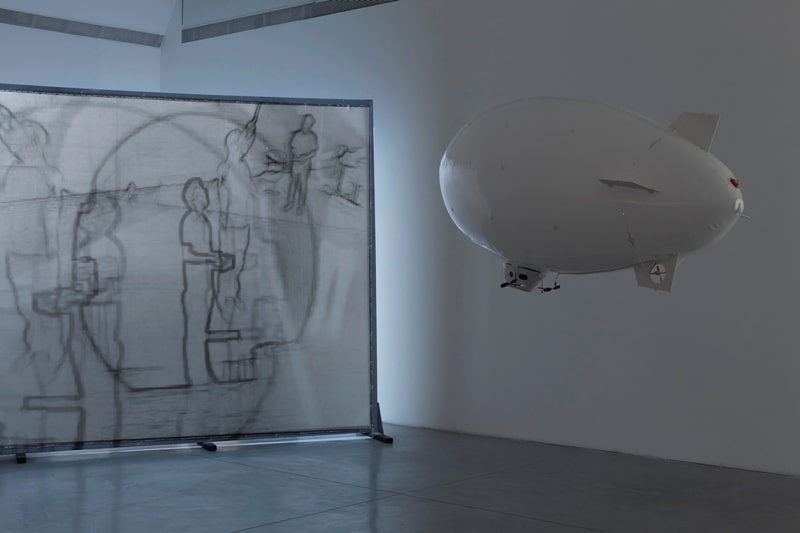
Orb (2014) by Guy Goldstein, Lucas Vickers and Ariel Efron, and Shredder (2014) by Eyal Assulin both use innovative manufacturing technologies. Orb uses programming and electronics, but refers to machinery of the past – gear wheels and the Zeppelin, the airships which operated even before WWI in civilian and military flights. Orb is an impressive work, although its splendor fades after a while. It comprises a “Zeppelin” floating in the space, carrying a camera filming viewers. The data is translated into a drawing projected onto a two-way screen at the entrance to the space, which also has a back-projection. Smart spots and cameras from the floor track the blimp, with the data fed as drawings into printers with a continuous paper feed. Layers of drawings continue until the papers turn black, paralyzed by the data overload.The work’s concept is in the tradition of key video works such as
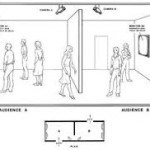
Dan Graham’s Time Delay Room (1974) or German artist Philipp Engelhardt’s 2012 White Cube Closed Circuit video engaged in issues of constant documentation of our lives and loss of privacy as part of the price paid for global processes (with the inescapable association to the Snowden affair). During the time spent in the piece, viewers participate in a kind of “Big Brother” reality show but in this case the documentation will collapse in on itself.

Assulin’s large Shredder moves on its axis, stopping at seemingly arbitrary intervals, powerful yet sterile. The work joins the tradition stretching from Duchamp to Mona Hatoum, moving from the absurd to the threatening.
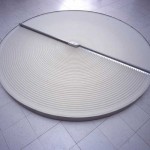
Another work which stands out is The Fair of Earthly Delights (2014) by Liav Mizrahi, who constructed circus-like scenery flats in which the viewer is invited to insert his head and participate. However, the scenes are complex, and sometimes frightening, such as a refugee ship in distress.
Russian Aleksandr Ptushko’s 1935 film, The New Gulliver is the only innocent work in this exhibition of sober meditations. A lad from a Communist youth movement dreams that he is a “new Gulliver” active against the bourgeoisie in a fairy-tale kingdom.
The wars of the past are lost, and Gulliver was no savior.Recalculating Route.
Curator: Drorit Gur Arie
Open Mon., Wed., Fri., Sat. 10 a.m.-2 p.m.; Tues., Thurs. 4-8 p.m.
Museum Complex, Yad Labanim, 30 Arlosoroff, Petach Tikva
Join the mailing list for Window’s weekly informational advertising newsletter: www.smadarsheffi.com/?p=925
Comments – please write to thewindowartsite@gmail.com

